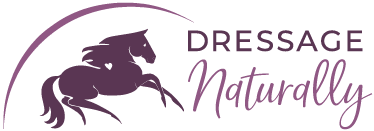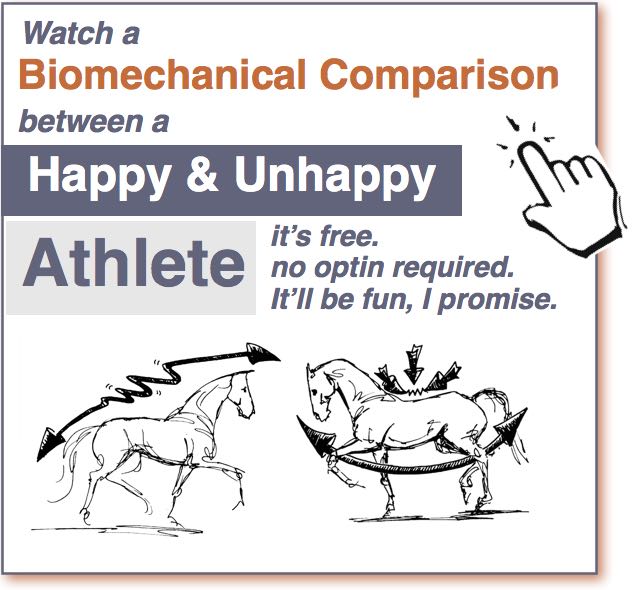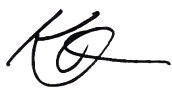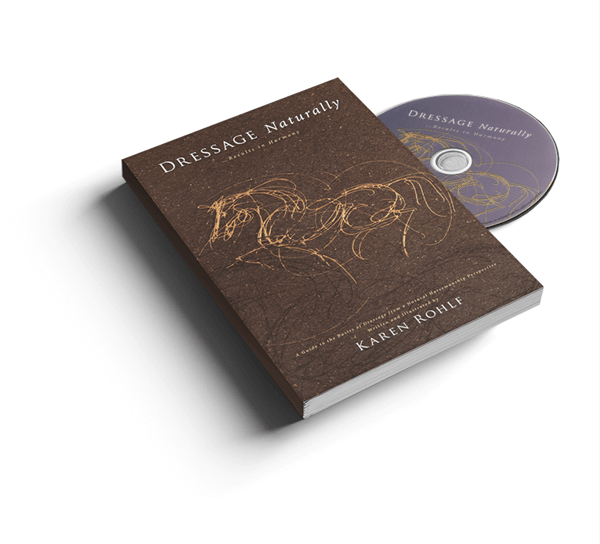The health of your horse’s back is vital to his performance. Achieving healthy back movement requires a holistic solution that takes into account every aspect of your horse’s experience. It is a mistake to think of the back in isolation from the whole horse. Unhealthy biomechanics can lead to sore backs, ulcers, poor performance, mysterious lameness, behavior issues, loss of trust, muscle tightness and many more issues.
Horses who do not have healthy movement are harder to get on the bit. They can also be heavy and bracing against the aids, or can avoid contact. A healthy back is a result of healthy posture... And posture is affected by everything.
As an example, imagine your posture if you were unhappy with your life and wearing uncomfortable clothes, then put in a class with a teacher you were afraid of who tried to make you have healthy-looking posture by strapping your head up and continually holding your body in a certain position without remedying the underlying cause of your posture!
Does that sound like fun? It doesn't to me!
Unfortunately this method is often used on horses. Even if the above example seems like an exaggeration to you, don’t underestimate the effect of subtle versions your horse is experiencing. Make sure you look at all the areas where you can improve the dynamic between you and your horse.
What is a healthy back?
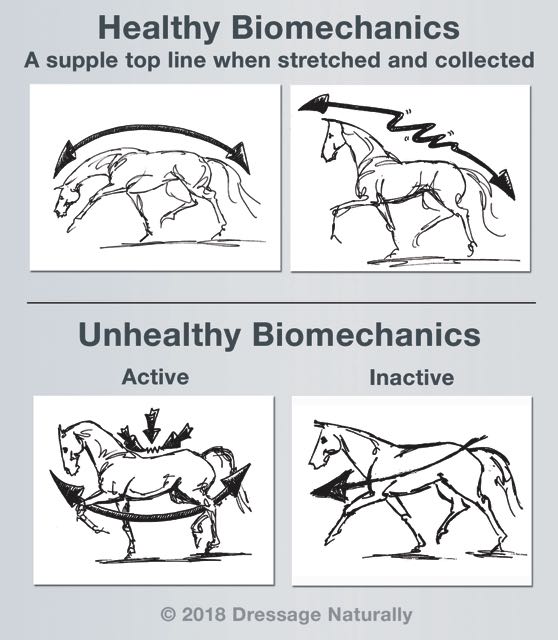
A healthy back is one that is loose, supple, and free from strain and compression. The muscles are free to contract and relax, allowing freedom of movement.
This is reflected in what is called a ‘round’ posture; the horse is able to softly extend his neck forward, lift through the withers and swing his hind legs under his body. It is healthy because the energy flows smoothly through his body and any shock or pressure is more evenly absorbed and distributed.
An unhealthy back is anything other than that. I put unhealthy biomechanics into two main categories: Active and Inactive.
Active Unhealthy biomechanics happen when the back is actively contracting, causing undue strain on the legs and spine. This discomfort often creates more defensive posture and perpetuates a cycle of brace and strain.
Inactive Unhealthy biomechanics happen when the horse’s back is not athletically activated, causing the horse to overload the forehand with undue concussion on the front limbs. This perpetuates a cycle of reluctance to athleticism.

Karen Rohlf simplifies and explains complex training issues,
and empowers you with the confidence to get results.
How do we achieve healthy biomechanics?
Creating a healthy back is not about ‘driving them under’, or ‘making them round’. It is not about fixing your horse’s shape. The shape appears more easily and naturally when you address the root problems first.
When seeking to improve your horse’s posture, remember:
- Shape is a result of Balance.
- Balance is the result of Movement.
- Movement is the result of Communication.
- Communication is a result of a Harmonious Partnership.
- Harmonious Partnership is possible with Happy individuals.
Make it your first goal to have a happy horse who feels open to your suggestions. Make sure he is happy to see you when you show up. Be trustworthy; a relaxed, stretched top line is a vulnerable posture for your horse. Be aware of defensive behaviors and eliminate the source of them. Motivate and inspire your horse by being a brilliant communicator and rewarding him well.
Make sure you show up to your horse as your best self
When you look at your horse’s posture in this way, you will find small improvements that will bring you giant steps closer to the healthy movement your horse will thank you for!
